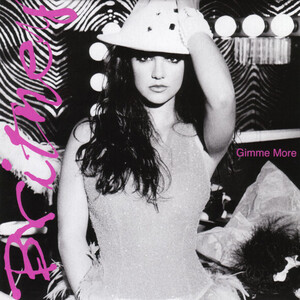Released: 22nd October 2007
Writers: Nate Hills / James Washington / Keri Hilson / Marcella Araica
Peak position: #3
Chart run: 3-6-7-8-13-18-18-30-53-63-43-45-34-35-38-44-49-69
Billboard Hot 100 chart run: 85-75-68-3-3-6-13-16-13-26-29-42-52-60-69-65-53-63-66-78
Britney Spears’s fifth album arrived against the backdrop of a tumultuous few years. However, with Blackout, she sought to silence the intense media scrutiny that accompanied her every move by assuming creative control for the first time. And, with just three words, the lead single made a statement that redefined her career: “It’s Britney, bitch”.

Even back as far as the Greatest Hits: My Prerogative campaign in 2004, it had become apparent that Jive Records struggled to handle Britney Spears. In December – just months after announcing a career break with some barbed comments about being over-worked and over-exposed – she turned up unannounced at an LA radio station and premiered a low-quality demo of Mona Lisa, stating it was intended to be from a new album titled Original Doll. The label scrambled to assert that while Britney Spears was recording new material, no such project existed, and there were certainly no plans to release Mona Lisa as the lead single. She followed up on her initial statement about taking a break, clarifying that it referred specifically to escaping the infrastructure that surrounded her as a pop star to become more hands-on in creating and managing her music. As a compromise of sorts, Jive Records bowed to pressure from Britney Spears to commission a music video for Do Somethin’ from Greatest Hits: My Prerogative and release it as a single (albeit with a modest budget and little time for the shoot). The seeds of discontent had been sown, and things only became more strained in the years that followed.
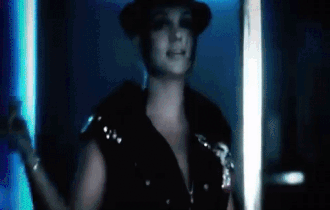
For much of her career, Britney Spears had been subject to press intrusiveness that often crossed the line of public interest (the speculation around her sex life – including a businessman offering to pay £7.5 million to Jive Records in exchange for her virginity – was peculiarly gross). The tone changed after she married Kevin Federline and gave birth to sons Sean Preston in 2005 and Jayden James in 2006. Britney Spears now had to navigate motherhood under the watchful gaze of the paparazzi, who scrutinised (and in some instances provoked) her every action. Any error of misjudgement – of which there were some by her own admission – was commented on; when she struck up a friendship with Paris Hilton, their nights out were photographed and splashed across the tabloids. Britney Spears’s life began to feel like an extension of reality TV culture. The format purported to give audiences access to every part of people’s lives, both civilian and celebrity (Britney herself had starred in Britney and Kevin: Chaotic, a five-part series documenting their relationship in 2005). That, in turn, eventually seemed to perpetuate a notion that nothing was out of bounds anymore. The lines between fact, fiction, professional and personal were so blurred they barely existed anymore.
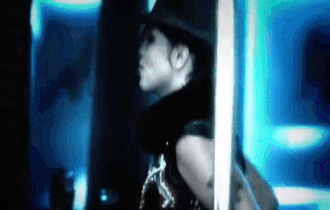
Exacerbating the situation was Britney Spears’s increasingly erratic behaviour (she later revealed that she’d experienced perinatal depression), which created an insatiable morbid fascination with how far she appeared to be spiralling amid the breakdown of her marriage to Kevin Federline. It’s not to say that concerns weren’t voiced. However, though troubling, uncomfortable images from that time – shaving her head, attacking the paparazzi with an umbrella – had become normalised as part of the furore and chaos that now accompanied Britney Spears wherever she went. So, it’s fitting – perhaps even inevitable – that her fifth studio album, Blackout, stands as a manifestation of the sheer bedlam in which it was created and an expression of the artistic freedom she craved.

While the two preceding albums – Britney and In The Zone – boasted more writing credits from Britney Spears, this is, to date, the only one she’s executive produced, and it shows. Without Jive Records peering over her shoulder and tactically strategising what was being created to the same extent they once would have, Blackout could evolve organically without any preconceived idea of what it needed to sound like. The only stipulation given by Britney Spears is that she didn’t want the music to focus on her personal life. This remained the one area where she could control the narrative and, with the help of Nate “Danja” Hills and Bloodshy & Avant – who co-produced nine of the 12 tracks on the standard edition – what emerged was an album that fused elements of pop, electro, dance and R&B. Unlike In The Zone, which experimented with different genres on a predominantly track-by-track basis, here they were all thrown together at once. It brought music trends that existed mainly on the periphery of the charts (if at all) fully into the mainstream because, regardless of what else was happening at the time, the legacy of Britney Spears’s music remained untarnished, which meant people paid attention to what she did.

Yet, it’s impossible to disassociate Blackout from her personal life and draw parallels – intentionally or otherwise – throughout. Whether the direct retort of Piece Of Me or moments of lucid introspection like the middle eight in Heaven On Earth, built around a refrain of: “I fall off the edge of my mind”. Even the way the album was recorded and stitched together from studio sessions that were limited to one or two takes because Britney Spears couldn’t be in one place for too long without the paparazzi swarming outside. Rather than try to separate itself from the noise surrounding her, Blackout channels every aspect of that into a cohesive body of work that is, ironically, defined by the disorder and disarray around it. Yet, one thing remained unchanged. Launching a new Britney Spears album required a lead single that would make an immediate impact and set the tone for the campaign. Gimme More managed to do precisely that with three words uttered in the first second of the song: “It’s Britney, bitch”.
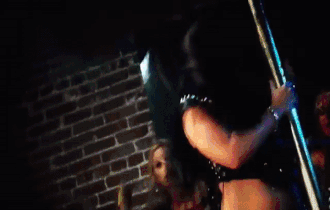
That intro is to the post-Blackout era of Britney Spears’s career what the opening chords of …Baby One More Time were to the preceding one. It’s iconic, unmistakably recognisable and delineates an exact moment in her catalogue. Gimme More immediately breaks into life with a hypnotic beat. There’s a rich depth of quality in the production. The track sounds almost too big for the speakers, pounding and throbbing against them with a fuzzy electro bassline as Britney coyly giggles: “I see you, and I just wanna dance with you”. It feels like the track Me Against The Music aspired to be, but here, the execution matches the scale of the credible, club-ready ambition. That’s where Gimme More inherently belongs, appealing to an impulsive nature of wanting to move with the beat.

The song is written so that it leans into the preoccupation with Britney Spears’s personal life and how that factors into her enjoyment: “We can get down, like there’s no one around, we keep on rocking (we keep on rocking), we keep on rocking (we keep on rocking), cameras are flashing, while we’re dirty dancing, they keep watching (they keep watching), keep watching, feels like the crowd is saying…”. However, that sentiment could, in principle, apply to pretty much any part of her career. It’s also not so specific as to render Gimme More about fame or a celebrity lifestyle. The frisson of attraction and how it feels to be caught up in the moment: “The centre of attention (do you feel that), even when we’re up against the wall, you got me in a crazy position (yeah), if you’re on a mission (uh-huh), you got my permission (oh)” is relatable on any level. Gimme More – much like I’m A Slave 4 U – taps into a raw, rhythmic sexiness that isn’t explicitly stated but runs palpably throughout the track.
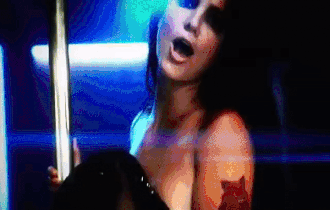
Among Blackout’s stylistic hallmarks is the use of manipulated and distorted vocals. Gimme More is peppered throughout with ad-libs that have a phoned-in effect. The more prominent aspect is the pitch-shifting in the chorus: “Gimme gimme (more), gimme (more), gimme gimme (mo-o-o-re), gimme gimme (more), gimme (mo’), gimme gimme (more); gimme gimme (mo-o-o-re), gimme (more), gimme gimme (mo-o-o-re), gimme gimme (more), gimme (mo’), gimme gimme (more)”, which essentially crafts the main hook of the track from two words. Though it falls into a recognisable pattern, the repetitiveness never feels uninspired. By the middle of its four-minute run time, Gimme More is already gearing itself up for a finale with a spoken middle eight: “I just can’t control myself (more), they want more, well, I’ll give them more…(more) ow!”. Despite how much of a departure the song is in almost every regard, the inclusion of some trademark distinctive vocal runs ensures the same Britney Spears is still inherently present underneath the production. Yet, after a disorientating pitch shift downwards, it’s Danja who takes centre stage on the spoken outro: “Bet you didn’t see this one coming, the incredible Lago (mo-mo-mo-m-m-m-m), the legendary Miss Britney Spears, haha, and the unstoppable Danja, ah, you gonna have to remove me, ‘cos I ain’t going nowhere, haha (mo-mo-mo-m-m-m-m-more)”. Gimme More – and Blackout more widely – marked his first major foray as a solo producer after working closely with Timbaland. Thus, the track is almost as much a showcase for Danja as it is a comeback for Britney Spears, and to have them situated so prominently at either end is deservedly appropriate.
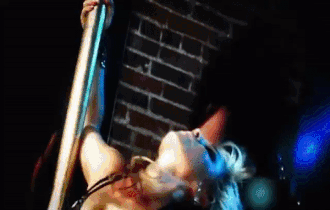
Gimme More wasn’t actively promoted in the transitional sense, though that had become standard for Britney Spears (My Prerogative and Do Somethin’ weren’t performed on television at all). However, this is the first time she launched a new studio album and essentially let the music speak for itself. Almost. In September, days before the MTV Video Music Awards, there was confirmation that Britney Spears would be performing at the ceremony, held in Las Vegas. This was huge. Not just in terms of her history at the VMAs, which has resulted in some enduringly iconic moments (dancing with a python to I’m A Slave 4 U; the infamous kiss with Madonna), but also for the return of Britney Spears as a visual pop performer on-stage. To the vast majority of people – other than the 7,000 who attended the six-date M+M’s Tour with a setlist of five songs several months earlier – she hadn’t done that in any meaningful sense since 2004. Thus, there was a sense of optimistic curiosity that this might mark a turning point. In some respects, it did, but not in the right direction…
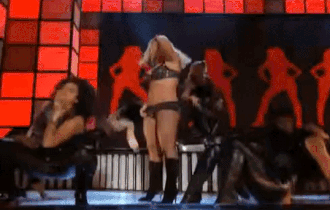
The performance – which opened the show – did nothing to counter the tabloid portrayal of this as a Britney Spears going off the rails. It begins with a half-spoken rendition of the opening lines of Elvis Presley’s Trouble (“If you’re lookin’ for trouble, you came to the right place. If you’re lookin’ for trouble, look right in my face”) before Gimme More starts. And immediately, something is off. As the dancers gyrate around Britney, she teeters on the spot and wanders around, looking almost bewildered. Things recover to a degree once the first verse introduces more direction, but there is a lot of walking around, and the accompanying arm movements are almost apologetically half-hearted. Even the lip-syncing is more or less Britney Spears mouthing along with the song – including the distorted backing vocals – rather than her own voice. There are a few moments where flashes of instinctive, smooth movements are seen, but for the most part, it’s unavoidably stilted. A lot of attention was paid to Britney Spears’s appearance and outfit – a jewel-encrusted black bikini – she wore. Regardless of whether it’s flattering to her figure (which was, at the very worst, entirely normal by any reasonable standard), the styling isn’t very interesting. Where the VMAs faltered as a comeback for those who knew what Britney Spears was capable of in terms of stage presence is that she appeared as a shadow of her former self. Seemingly gone was the pop star who thrived on the adrenaline of her nerves to put on a captivating show, and in its place was somebody who looked…nervous.
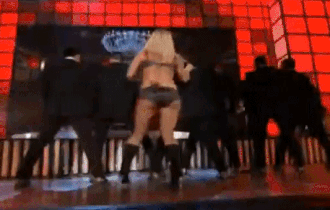
So, what went wrong? There are many factors beyond what was reported, such as Britney Spears not rehearsing enough and spending most of her time in Las Vegas partying. When the performance was first announced, it was billed as a collaboration with magician Criss Angel. He’d planned an intricate sequence that involved having duplicate Britney’s on stage using visual effects before she transformed into a flock of birds and reappeared to levitate above the audience. This was deemed too complex and time-consuming to achieve, so Gimme More instead ended up with a strip club aesthetic, with pole dancers and a screen showing silhouetted women. However well she delivered on the night, this concept – if it can be called that – played up to the tawdrier aspects of the persona being projected onto her. To make matters worse, an already anxious Britney Spears bumped into Justin Timberlake backstage. That encounter served as a reminder of the success he’d enjoyed with his Futuresex/Lovesounds album (he picked up four awards on the night). Furthermore, the staging of his performance was slick, cool and oozed confidence. In essence, she perceived them to be at opposite ends of the spectrum, which did little to boost her confidence.
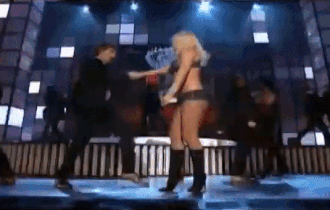
Yet, there are also reports that Britney Spears added to the difficulties. She allegedly rejected the outfit MTV wanted her to wear – which was very different from the one she ended up in – and disagreed with her hair stylist, who quit on the spot. It’s not hard to imagine there’d be some truth to this because for the last few years, by her own admission, Britney Spears had sought to wrest control of her career from those in charge since the beginning. So, returning to an environment like the VMAs where, realistically, decisions would be made (or attempts to, at least) on her behalf probably did create some tensions. Furthermore, there can’t be any argument that Britney Spears partied in Las Vegas because – as was customary – the paparazzi were there to document it. Yet, what happened on the night of the VMAs is not a fair representation of how Gimme More could – and should – have looked. Rehearsal footage shows her appearing more comfortable and engaged. The choreography is still underwhelming compared to the high benchmark of previous VMA appearances and likely would’ve been criticised regardless, but it was competent. That, along with a slightly different mix to arrange the song as if it could be live (I’m A Slave 4 U is an excellent example of the difference it makes), might’ve been enough to leave the audience – and Britney Spears herself, who still reflects negatively on the performance – with an impression that it was the best it could’ve been given the circumstances.
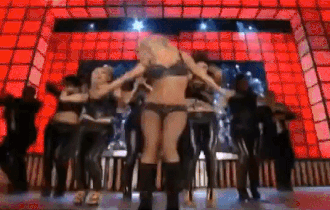
It’s entirely possible the VMAs would’ve overshadowed whatever music video accompanied Gimme More. Nonetheless, every Britney Spears album had at least one defining visual treatment. With a month after the VMAs until the video premiered (despite being filmed in July), there was still a chance for some damage limitation. That is until the final – unfinished – product arrived. It primarily consists of Britney Spears dancing around a pole for four minutes, at one point doing so after removing her vest top and clutching her breasts in the uncensored version. It’s edited as much as possible so that the blue and purple lighting creates visual flare, but there’s so little to work with. Weirdly, the whole thing does fit Gimme More tonally, so it’s not to say that there wasn’t a place for aspects of the pole dancing to feature. However, stretching it to fill almost four minutes is ineffective. By this stage, even morbid curiosity wasn’t much of a factor anymore – particularly after the VMAs – so it’s not interesting enough to sustain engagement.
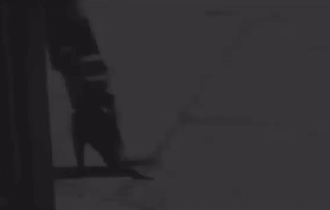
Once again, what ended up being seen is not necessarily what had been intended. The original concept appeared to involve Britney Spears walking along the street dressed in something resembling funeral attire (a short black dress and veiled hat), while footage also exists of her on a bed with a cat. These scenes were filmed – and have since leaked – but omitted from the official video. It’s evident from interviews given by people on and around the set that the shoot was not straightforward, and the funeral idea ultimately got scrapped (allegedly because Britney refused to follow the script…which, again, isn’t outside the realms of possibility). There seemed to be an attempt to craft some narrative out of the footage obtained: the pole dancing scenes are intercut at the start of the video with Britney Spears in a blonde wig looking across from the bar, which has a light vs dark vibe, but that doesn’t go anywhere, so it’s unclear when – or why – those were shot. Jive Records quickly distanced themselves from the visuals, stating that the whole idea and execution was Britney’s alone. If there’s one resounding positive to take from Gimme More, though, it’s that she looks happy and carefree, which had become an all-too-rare occurrence.
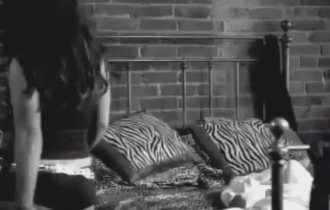
Although that – along with radio airplay – is all the formal promotion given to Gimme More in the UK, the track was highly publicised because, if anything, the tabloid frenzy around Britney Spears intensified. It debuted and peaked at #3 with modest sales of 17,608 copies but became the first of her hits to benefit from the inclusion of downloads, which gives a clearer measure of the song’s popularity. Gimme More spent 18 weeks in the top 75, the longest time a Britney Spears single spent on the chart since …Baby One More Time achieved 22 weeks in 1999. The track was the 52nd biggest-seller of 2007 (132,500 copies) and the 191st best-seller of 2008 (56,600 copies). As of 2022, with the inclusion of streaming, Gimme More had a combined total of 596,000 units, making it her sixth-biggest single in the UK.

Meanwhile, in America, this tentatively marked the start of Britney Spears’s most consistent run of hits. The decision by Jive Records not to commercially release many of her early singles to drive demand towards the albums was a strategy that paid off. It meant, though, that many of her most well-known songs relied solely on airplay and attained comparatively low chart peaks. Indeed, only four reached the top ten: …Baby One More Time, (You Drive Me) Crazy, Oops!…I Did It Again and Toxic. With downloads now firmly integrated into the Billboard Hot 100, Britney Spears could finally enjoy the success she likely would have had all along. Thus, a few weeks after Gimme More entered at #85 through radio airplay, digital sales saw it reach #3 and become her highest-peaking single since …Baby One More Time. Whatever else would happen in the following months, Britney Spears was – chart-wise, at the very least – back in a way she hadn’t been for a very long while.

The same wasn’t so true for Blackout, though. Despite the high regard with which it’s now held, the album received a surprisingly modest critical and commercial reception in 2007 (its Metacritic score is higher than Britney but lower than In The Zone and Oops!…I Did It Again). It debuted at #2 in the UK but dropped out of the top 75 after five weeks. Subsequent singles – Piece Of Me and Break The Ice – galvanised interest enough for the album to return to the top 20, but ultimately, the absence of promotion was always going to be a limiting factor. Blackout also peaked at #2 in America, becoming the first Britney Spears studio album not to reach #1. That wasn’t without some controversy because Billboard enacted a rule change the day before publishing the chart, which Blackout was widely expected to top. The Eagles released Long Road Out Of Eden exclusively through Wal-Mart that same week. Albums only available through one retailer were usually excluded due to the inconsistency with which sales information could be collected. However, with the data made readily available to Billboard, they decided to recognise it, and Long Road Out Of Eden was declared #1 instead. In fairness, the Eagles sold significantly more (711,000 copies compared to Blackout’s 250,000). Still, the timing was poor and did, in some respects, feel like it mightn’t have happened with such expediency if a pop act like Britney Spears hadn’t been on the receiving end. Would Billboard have done the same thing if the situation were reversed? Who knows.

In hindsight, though by no means a commercial disaster, Blackout may seem like it should’ve been far bigger because it’s an album widely cited as influential on pop music – particularly in America – during the remainder of the ‘00s and beyond. Moreover, it’s almost unanimously regarded by critics and fans as being Britney Spears’s best work. Yet, that’s perhaps the most significant achievement of Blackout, possibly best defined by the enduring popularity of Gimme More. The deafening noise around it could have so easily swallowed the song. And for a time, there was some stigma attached (Britney didn’t perform it again until the Femme Fatale Tour in 2011). The music video will always exist as it is, and the VMA performance cannot be undone. But those are now a very small part of Gimme More’s legacy. It stands not as a reminder of a troubled period in Britney Spears’s life but, first and foremost, as a brilliant pop track whose iconic opening words continue to elicit excitement and remain a resounding call to the dancefloor like few others.

